Descending onto the causeway at Bigbury beach, I sat myself down on the small dry triangle of sand untouched by the latest high tide, and proceeded to dig into my breakfast. A herring gull landed nearby hoping to share in my snacks. Every time I looked up it seemed to be standing just a little closer, reminding me of a game of grandmothers footsteps. I watched as oystercatchers flitted along the northern shoreline and observed an older couple making their way across the beach to join them for their daily swim.
I made my way across fresh untouched soft sand of the tidal causeway to Burgh island. May is my favourite time of year to visit for the wild flowers and nesting sea birds.
As I approached the island I was greeted by a playful gang of starlings swooping, twisting and chattering around the old Pilchards Inn. Bluebells cover the island at this time, despite the lack of trees. Thanks to the bracken cover providing them tree like shelter, there is a beautiful display to admire. A family of stonechat flitted in and out of the flowers, with two adults feeding a baby and nearby a pair of pigeons fluffed and preened their feathers seemingly unperturbed by my presence.

I started to climb the island stepping over lots of little rabbit diggings, reaching the top, I turned and watched a pair of house martins land on the path behind me, scooping up the sandy dirt they flew off in the direction of the hotel to make their nests.
At the back of the island on the western side, steep cliffs drop down to the rocky shore and sea stacks rise up, providing the perfect perch for gulls to safely survey their domain. I settled on the clifftop amongst the drifts of sea pinks and sea campion and peered down at the rocky cliffs and shore below. A bit of movement caught my eye and I spotted a number of shags nesting on the smallest of nooks in the cliff; as one of them shuffled I spied a pair of bright white eggs. After a bit of careful spotting, I counted a total of eight shag nests and two herring gull nests from my viewpoint, all with birds sitting keeping their eggs warm.
A pair of kestrel drifted into view, seemingly floating in mid-air. They rose high in a thermal and I watched them until they were so high I lost sight of them.
Looking out to sea, a long line of seagulls were traveling low to the water, maybe they had had their fill of fish and were on their way to rest and digest their breakfast. Flying in the opposite direction were a pair of juvenile gannets, not yet their full striking white colour, but mottled with greys and browns. They flew with purpose in the direction from which the gulls were leaving, possibly in the hope of catching some of the remaining fish.
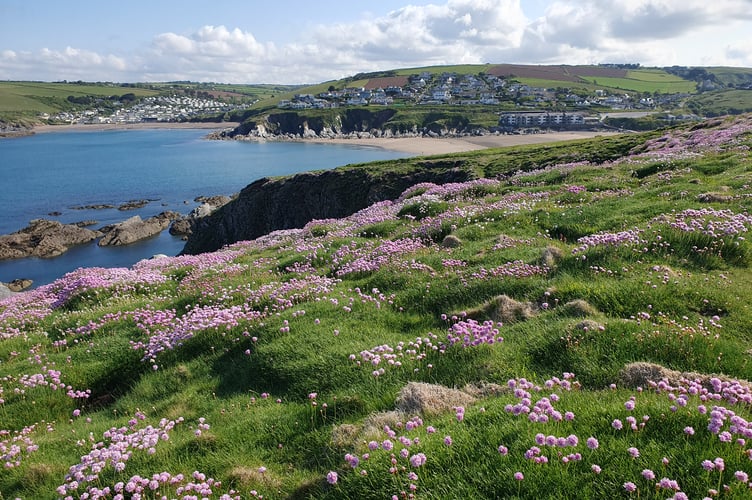
One bird I came to Burgh island hoping to see was the fulmar, a small stocky bird distantly related to an albatross and after some patience, I noticed the familiar rapid wingbeat of this species. Fulmar are more commonly found further north, in places like Scotland, but a few venture to south devons cliffs to nest. Being one of the family of tube-noses, they are renowned for squirting potential threats with a stinky oily substance, so best to not get too
close. I watched as one drifted past on the breeze quickly flapping its wings every now and then to stay airborne.
On the north western corner of the island, there is the most amazing display of armeria otherwise known as thrift, sea pinks or ladies cushions, the latter of which may be inspired by the soft mounds created by the plant, out of which their pink bobble like flowers grow. Also enjoying these pillows of pink were a pair of skylarks whose noisy song erupted as they emerge from the flowers.
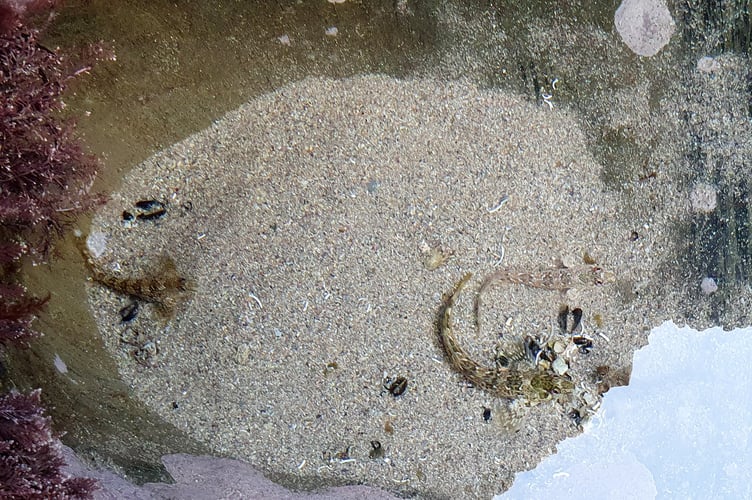
Back on the beach, I skirted the north shore of the causeway, making my way to the rocks to deposit my bag to go for a swim. The spot I chose was home to an amazing fish bowl shaped rockpool home to a number of blennies. A dark coloured fish scooted across the pool to join others on a patch of sand and I watched as it gradually changed colour to match its friends and the colour of its surroundings. I nearly didn’t see another blenny which in comparison to the others, was huge (actually prob about 15cm), it was trying to hide behind a flimsy piece of seaweed.
I waded my way into the shallow sea for a swim. When I eventually had enough depth of water to wave my arms and legs around in some kind of fashion to propel myself forward, I submerged. After swimming a little way alongside the rocky shore, I noticed an oystercatcher hopping around, I stopped and watched as it prized crustations off the rocks with its long orange beak. Not wanting to disturb it, I turned around and swam back to the beach.
As I was getting changed into dry clothes, I heard a sizzling sound coming from the rocks. After some investigation I discovered areas of water draining from rockpools over barnacles. The heat from the sunshine was making them hiss as the water evaporated.
For a moment I stood with my eyes closed, listening to the sounds of the seaside and smelling the salty air and made a mental note to be grateful for such a lovely day.
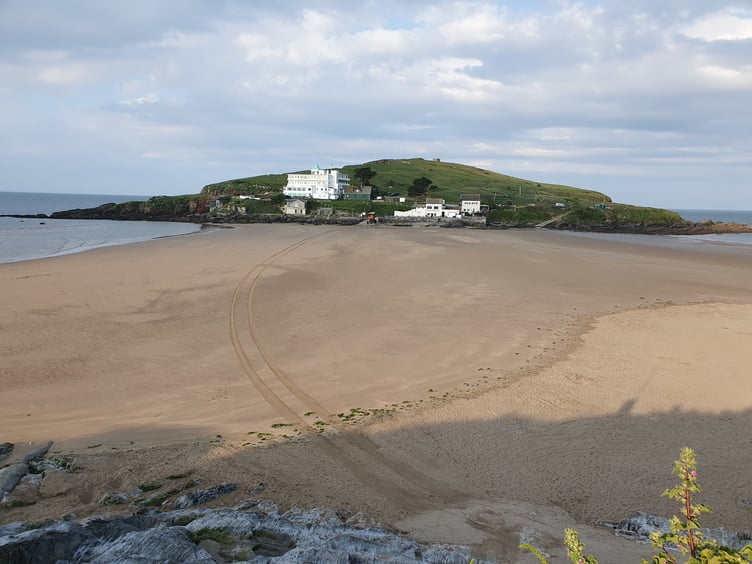

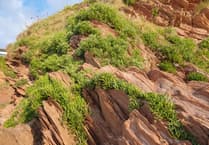
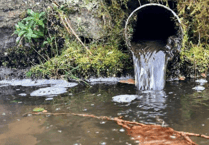

Comments
This article has no comments yet. Be the first to leave a comment.